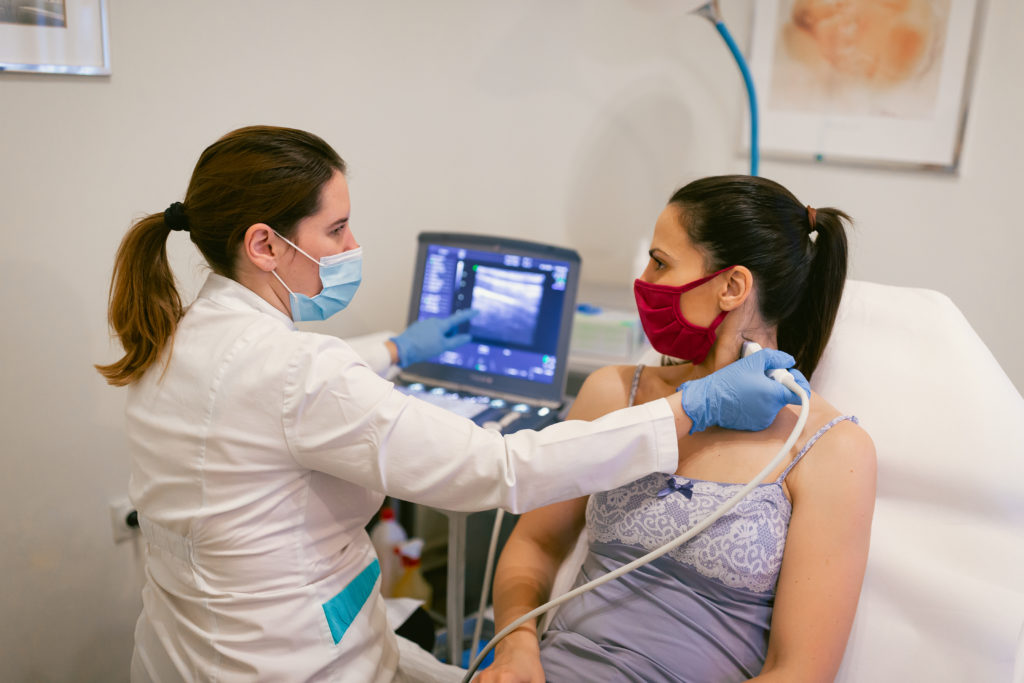The American Cancer Society estimated that nearly 1.7 million people in the U.S. were diagnosed with cancer in 2018. Furthermore, cancer is the second-most common cause of death in the U.S., exceeded only by heart disease. You can, however, increase your odds of survival by getting screened.
A screening offers the opportunity to detect some cancers early when no symptoms appear, leading to treatment that is less extensive and more likely to be successful. Screenings help reduce mortality for cancers of the breast, colon, rectum, cervix and lung (among long-term and/or heavy smokers).
Here is a list of screenings for individual cancers. Published guidelines from organizations such as the American Cancer Society (ACS) and Centers for Disease Control and Prevention (CDC) are not always in agreement as to the type of test to perform, age at which to begin/end testing, or even the value of screening at all. Keep in mind that insurance coverage may vary based on the type of screening as well as the patient’s risk factors. Consult with your health care provider to determine your risk factors and what screenings could be beneficial to you.
Breast Cancer
Breast cancer is the most common cancer in women in the U.S., exceeded only by skin cancer. The ACS recommends women receive a clinical breast exam every three years from ages 20 to 39. At age 40, mammograms are recommended yearly. There are discrepancies on what age mammograms are no longer beneficial. Self-exams also can be helpful, starting at age 20. See your doctor if you find a lump.
Cervical Cancer
Cervical cancer incidence and mortality rates have declined since the introduction of the Pap test. The recent introduction of the HPV vaccine also has helped reduce the incidence of cervical cancer. The CDC recommends a Pap test for all women between the ages of 21 and 65. The HPV vaccine should be given to girls ages 11 to 18. Women ages 19 to 26 should discuss HPV risk factors with their health care provider.
Colorectal Cancer
According to the ACS, more than 135,000 people were diagnosed with colorectal cancer, which includes colon and rectal cancers, in 2017. The overall incidence and mortality rate, however, has been declining for years, which is largely attributed to screening. Beginning at age 45, there are several tests that may be used to screen for colorectal cancer screening. They include:
Stool-based Tests
- Highly sensitive fecal immunochemical test (FIT) every year
- Highly sensitive guaiac-based fecal occult blood test (gFOBT) every year
- Multi-targeted stool DNA test (MT-sDNA) every three years
Visual Exams
- Colonoscopy every 10 years, or as recommended by your doctor
- CT colonography (virtual colonoscopy) every five years
- Flexible sigmoidoscopy (FSIG) every five years
The frequency of screening may increase, depending on the number of precancerous polyps removed during a colonoscopy and overall risk factors.
Prostate Cancer
African-American men and men with a first-degree family member diagnosed with prostate cancer are at greatest risk. The ACS recommends PSA (prostate-specific antigen) testing and a digital rectal exam every year after age 50. How or whether to treat this slow-developing disease is a discussion for you and your health care provider.
Lung Cancer
Lung cancer is the leading cause of death of men and women. Since 1964, more than 20 million deaths from lung cancer are attributed to tobacco use. Annual lung cancer screening by Low-Dose CT in those that qualify has been proven to reduce the chances of dying from lung cancer by 20 percent. Nationally, it has been determined that Low-Dose CT lung cancer screening should be offered annually to adults who meet the following criteria: between the ages of 55-77; asymptomatic with no signs or symptoms of lung cancer, and no major medical problems that would prevent cancer work-up and treatments if discovered during screening; current smoker or quit smoking within the past 15 years; or has a tobacco smoking history of 30+ pack years.
Ovarian Cancer
Ovarian cancer is the most lethal of women’s cancers, but its incidence is lower than breast or cervical cancer. Fewer than half of women diagnosed with ovarian cancer survive for more than five years. Recommendations for screening traditionally have been organized into one of two sets of guidelines — one for women at average risk and the other for those at increased risk. Gene mutations (BRCA1 and BRCA2) can substantially increase a woman’s chances of developing ovarian cancer. A blood test for the protein CA 125 and a transvaginal ultrasound are recommended every six months for women with high risk factors and annually for women at moderate risk. The risk can subside after childbearing is complete.
Skin Cancer
Basal cell skin cancer and squamous cell skin cancers are the most common skin cancers in the United States. People at high risk, such as those with freckled, light skin or who frequently were sunburned or used tanning equipment, are recommended to have a visual screening annually. Your risk also is higher if you have a family history of melanoma or radiation therapy.
For more on what you can do to help reduce your cancer risk or for additional questions about cancer, visit the American Cancer Society website at cancer.org.
To find a doctor or schedule an appointment, visit Steward DoctorFinder™.




